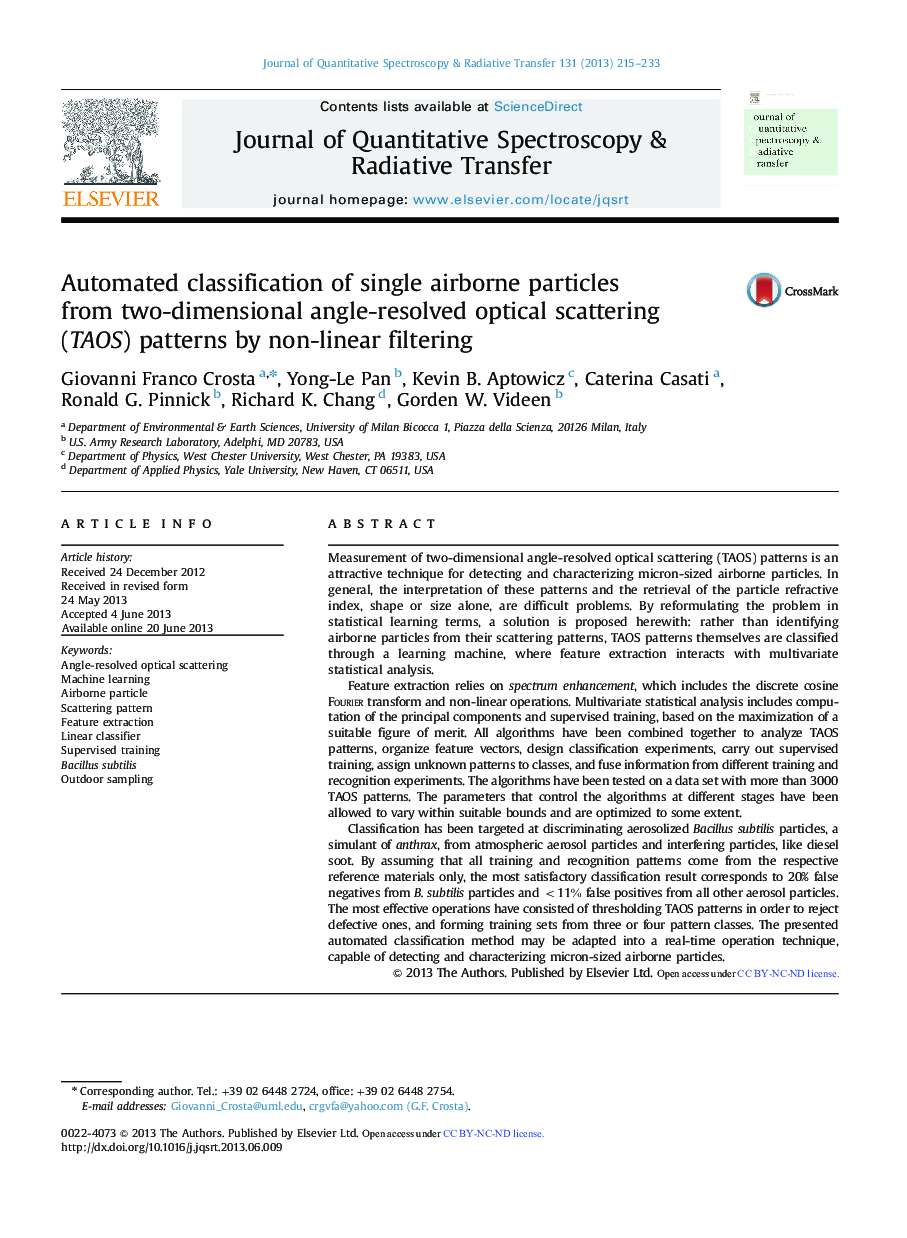| کد مقاله | کد نشریه | سال انتشار | مقاله انگلیسی | نسخه تمام متن |
|---|---|---|---|---|
| 5428607 | 1508684 | 2013 | 19 صفحه PDF | دانلود رایگان |

- More than 3000 angle-resolved intensity patterns from single particle optical scattering have been classified.
- A feature extraction module interacts with a linear classifier.
- Feature extraction from the scattering pattern relies on non-linear filtering.
- Linear classification relies on principal components analysis of extracted features.
- The classifier returns 20% false negatives from Bacillus subtilis patterns and <11% false positives from patterns of other aerosol particles.
Measurement of two-dimensional angle-resolved optical scattering (TAOS) patterns is an attractive technique for detecting and characterizing micron-sized airborne particles. In general, the interpretation of these patterns and the retrieval of the particle refractive index, shape or size alone, are difficult problems. By reformulating the problem in statistical learning terms, a solution is proposed herewith: rather than identifying airborne particles from their scattering patterns, TAOS patterns themselves are classified through a learning machine, where feature extraction interacts with multivariate statistical analysis.Feature extraction relies on spectrum enhancement, which includes the discrete cosine Fourier transform and non-linear operations. Multivariate statistical analysis includes computation of the principal components and supervised training, based on the maximization of a suitable figure of merit. All algorithms have been combined together to analyze TAOS patterns, organize feature vectors, design classification experiments, carry out supervised training, assign unknown patterns to classes, and fuse information from different training and recognition experiments. The algorithms have been tested on a data set with more than 3000 TAOS patterns. The parameters that control the algorithms at different stages have been allowed to vary within suitable bounds and are optimized to some extent.Classification has been targeted at discriminating aerosolized Bacillus subtilis particles, a simulant of anthrax, from atmospheric aerosol particles and interfering particles, like diesel soot. By assuming that all training and recognition patterns come from the respective reference materials only, the most satisfactory classification result corresponds to 20% false negatives from B. subtilis particles and <11% false positives from all other aerosol particles. The most effective operations have consisted of thresholding TAOS patterns in order to reject defective ones, and forming training sets from three or four pattern classes. The presented automated classification method may be adapted into a real-time operation technique, capable of detecting and characterizing micron-sized airborne particles.
Journal: Journal of Quantitative Spectroscopy and Radiative Transfer - Volume 131, December 2013, Pages 215-233